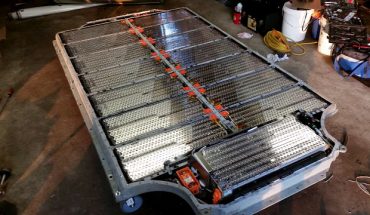
Breaking News
 $26M Frozen on Blockchain - With One Click
$26M Frozen on Blockchain - With One Click
 Italy are on national strike shutdown rejecting digital enslavement...
Italy are on national strike shutdown rejecting digital enslavement...
 The following U.S. states are currently using the rebranded "Reporty Homeland Security" so
The following U.S. states are currently using the rebranded "Reporty Homeland Security" so
 NATO Chief Urges Europe To Prepare For Long-Term World War With Russia, China, Iran & North Korea
NATO Chief Urges Europe To Prepare For Long-Term World War With Russia, China, Iran & North Korea
Top Tech News
 HUGE 32kWh LiFePO4 DIY Battery w/ 628Ah Cells! 90 Minute Build
HUGE 32kWh LiFePO4 DIY Battery w/ 628Ah Cells! 90 Minute Build
 What Has Bitcoin Become 17 Years After Satoshi Nakamoto Published The Whitepaper?
What Has Bitcoin Become 17 Years After Satoshi Nakamoto Published The Whitepaper?
 Japan just injected artificial blood into a human. No blood type needed. No refrigeration.
Japan just injected artificial blood into a human. No blood type needed. No refrigeration.
 The 6 Best LLM Tools To Run Models Locally
The 6 Best LLM Tools To Run Models Locally
 Testing My First Sodium-Ion Solar Battery
Testing My First Sodium-Ion Solar Battery
 A man once paralyzed from the waist down now stands on his own, not with machines or wires,...
A man once paralyzed from the waist down now stands on his own, not with machines or wires,...
 Review: Thumb-sized thermal camera turns your phone into a smart tool
Review: Thumb-sized thermal camera turns your phone into a smart tool
 Army To Bring Nuclear Microreactors To Its Bases By 2028
Army To Bring Nuclear Microreactors To Its Bases By 2028
 Nissan Says It's On Track For Solid-State Batteries That Double EV Range By 2028
Nissan Says It's On Track For Solid-State Batteries That Double EV Range By 2028
Finally, Commercialization of Wafers of Carbon Nanotube Transistor Chips

CNFETs are more energy-efficient than silicon field-effect transistors and could be used to build new types of three-dimensional microprocessors.
They found that dry cycling, a method of intermittently drying out the submerged wafer, could dramatically reduce the incubation time — from 48 hours to 150 seconds.
After analyzing the deposition technique used to make the CNFETs, Max Shulaker, an MIT assistant professor of electrical engineering and computer science, and his colleagues made some changes to speed up the fabrication process by more than 1,100 times compared to the conventional method, while also reducing the cost of production. The technique deposited carbon nanotubes edge to edge on the wafers, with 14,400 by 14,400 arrays CFNETs distributed across multiple wafers.
A 3D computer chip with combined logic and memory functions is projected to "beat the performance of a state-of-the-art 2D chip made from silicon by orders of magnitude.
Abstract
Carbon nanotube field-effect transistors (CNFETs) are a promising nanotechnology for the development of energy-efficient computing. Despite rapid progress, CNFETs have only been fabricated in academic or research laboratories. A critical challenge in transferring this technology to commercial manufacturing facilities is developing a suitable method for depositing nanotubes uniformly over industry-standard large-area substrates. Such a deposition method needs to be manufacturable, compatible with today's silicon-based technologies, and provide a path to achieving systems with energy efficiency benefits over silicon. Here, we show that a deposition technique in which the substrate is submerged within a nanotube solution can address these challenges and can allow CNFETs to be fabricated within industrial facilities.

 Carbon based computers that run on iron
Carbon based computers that run on iron

